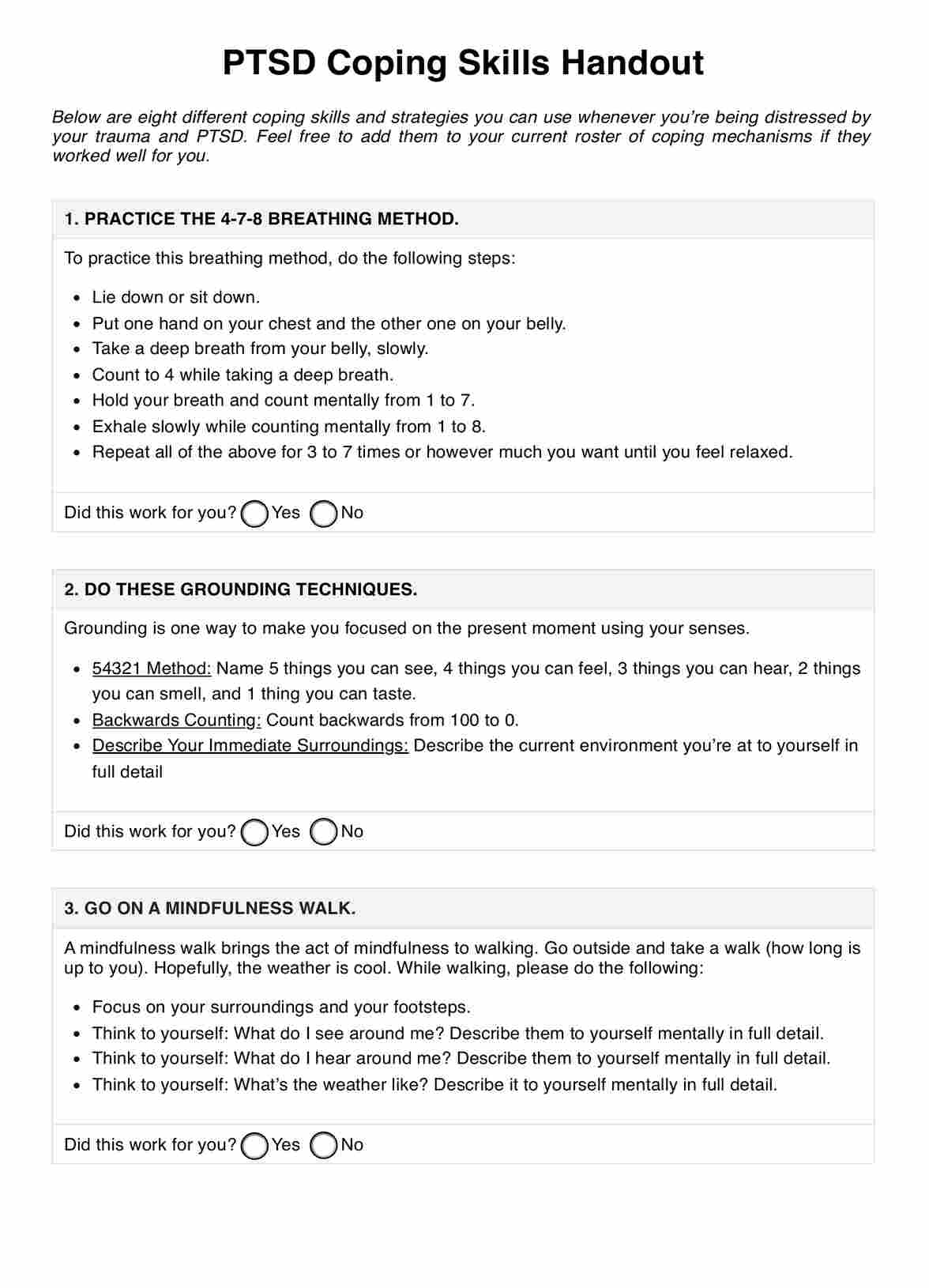It's not guaranteed they can, but they can at least lessen their impact, especially over time. They can also build people and make them more adaptive.

PTSD Coping Skills PDF
Learn what PTSD is and provide PTSD patients with a PTSD Coping Skills handout so they know what they can do when dealing with PTSD symptoms.
PTSD Coping Skills PDF Template
Commonly asked questions
It depends on the person. Some people with healthy coping skills become more resilient and adaptive and improve in a matter of weeks. That's not guaranteed for all people, though. Some will take months or years. The key is consistency.
Besides searching online resources, we recommend seeing mental healthcare professionals like psychiatrists and therapists (especially those specializing in cognitive therapy). Joining PTSD support groups is another good choice because people can share what coping skills and mechanisms they use, and others can try them.
EHR and practice management software
Get started for free
*No credit card required
Free
$0/usd
Unlimited clients
Telehealth
1GB of storage
Client portal text
Automated billing and online payments











